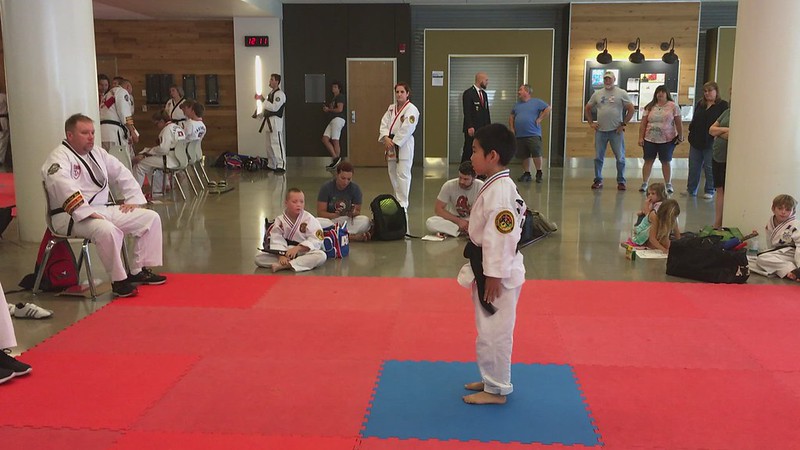- Taekwondo mid-term testing as a 2nd degree black belt
- Chinese final exam
- University music prep department piano recital
- Elementary school choral concert (Small Ensemble)
This covers sports, language, and a double dose of arts. The only thing he was missing was something in math and sciences (next year, if he continues robotics with First LEGO League, there will be something around this time of year).
One of the hazards of parenting in upper middle class suburban America is the parenting arms race, which is magnified among asians. All of the children we are in contact with are actively participating in a range of enrichment activities, many with a goal of an admissions package to get into a college of the parent's dreams (we do not always know the children well enough to know about their dreams). And looking down the road, from the complaints of parents whose children do not get into the desired schools despite these efforts, it does not seem to be consistently successful.
When we talk to other parents, we are dizzy trying to keep track of everything they do. Even DS9 feels busy to us, but then there are kids who can double up on every dimension (DS9 activities are roughly orthogonal to each other)
Even though DS9 did not cover many of the standard enrichment activities that are meant to lead to a selection, DS9 has been passing most selection stages he encounters (accelerated math, advanced programs, teams, music auditions). Fortunately, he does not have an appreciation for what this means, so he has not been participating in the posturing that is already observable in his peer group.
At this point, DS9 is happy with the activities he is in. He enjoys the competence. He enjoys the experience (most of the time) and he alternates between enjoying and despising the activities that lead to that competence (like most adults). And at this age, there is too much between now and college admission time to know what path the kids will take as they mature and develop other interests, and there are too many kids at his level to know if his trajectory will continue.
For her part, DD5 is in the early stages of the same. She does drawing (with a chinese teacher), piano, and taekwondo, enjoys all three pretty much all of the time. And is noticeably happy, almost all of the time. Almost the ideal of what you want out of a 5 year old.
Just as with DS9 at this age, the kids in her peer group are all more heavily involved in activities than she is. And just like him, we will see how this turns out.
When we talk to other parents, we are dizzy trying to keep track of everything they do. Even DS9 feels busy to us, but then there are kids who can double up on every dimension (DS9 activities are roughly orthogonal to each other)
Even though DS9 did not cover many of the standard enrichment activities that are meant to lead to a selection, DS9 has been passing most selection stages he encounters (accelerated math, advanced programs, teams, music auditions). Fortunately, he does not have an appreciation for what this means, so he has not been participating in the posturing that is already observable in his peer group.
 |
| DS9 is in lower right |
For her part, DD5 is in the early stages of the same. She does drawing (with a chinese teacher), piano, and taekwondo, enjoys all three pretty much all of the time. And is noticeably happy, almost all of the time. Almost the ideal of what you want out of a 5 year old.
Just as with DS9 at this age, the kids in her peer group are all more heavily involved in activities than she is. And just like him, we will see how this turns out.






















